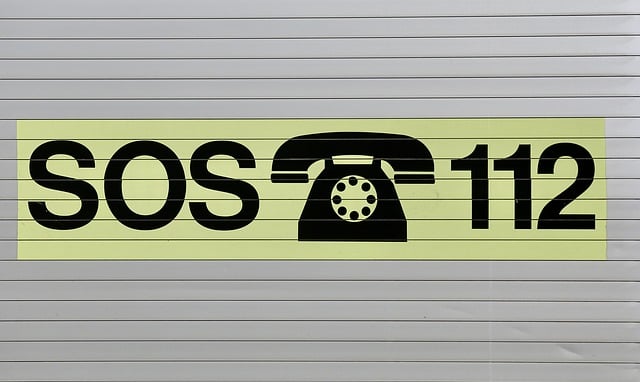Flashlights are a critical component of emergency preparedness. To ensure they're effective during unexpected power outages or emergencies, they should be strategically placed in accessible locations throughout your home, such as bedrooms, kitchens, and entrances. Regular battery checks and replacements are essential to avoid being caught in the dark. Select a flashlight that suits your needs, whether it's for close-up tasks or lighting up large areas, and always have a backup lighting solution as a precaution. Post-emergency care for your flashlights is equally important. Regularly inspect them for battery life, cleanliness, sealing, and functionality to maintain their reliability. By following these steps, you'll keep your emergency preparedness flashlights in optimal condition, ready to provide essential illumination when it's most needed. Remember, effective flashlight maintenance is a key part of staying safe during unexpected crises.
When disaster strikes, reliable lighting can be a lifeline. This article sheds light on the critical role of flashlights in emergency situations, guiding you through selecting the most suitable types for unforeseen crises. We delve into the importance of maintaining your flashlight’s battery health and the strategic placement of these devices within your home or office. Safety precautions during emergencies, practical training on usage, and best practices for navigating in darkness are all explored to ensure you’re prepared for sudden power outages or other emergencies. Additionally, post-crisis care ensures your flashlight is ready for the next time. Embrace flashlights for emergency preparedness with confidence and clarity.
- Understanding the Role of Flashlights in Emergency Situations
- Types of Flashlights Best Suited for Emergency Use
- Battery Selection and Maintenance for Optimal Flashlight Performance
- Flashlight Safety Precautions to Follow During Crises
- Strategic Placement of Flashlights in Your Home or Office
- Flashlight Training: Ensuring You and Your Family Know How to Use Them
- Best Practices for Using Flashlights in Darkened Environments
- Post-Crisis Flashlight Care and Maintenance: Keeping Your Tool Ready for Next Time
Understanding the Role of Flashlights in Emergency Situations
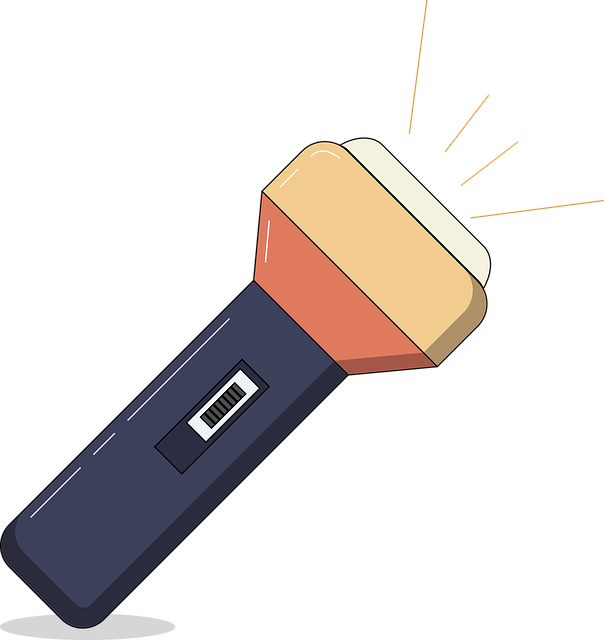
In unexpected crises, flashlights for emergency preparedness serve as indispensable tools for visibility and safety. They are crucial for navigation through dark environments, whether it’s finding one’s way out of a building during a power outage or searching for items in a dimly lit space after a disaster. Their portability and durability mean they can be stowed away easily yet remain ready to illuminate the path when needed. During an emergency, reliable lighting can significantly improve situational awareness, allowing individuals to identify potential hazards and avoid obstacles. It’s not just about seeing in the dark; it’s about maintaining a sense of calm and control amidst chaos. A well-prepared individual or family will have flashlights as part of their emergency kit, ensuring they are never left in complete darkness when every light source is crucial.
Moreover, choosing the right type of flashlight for emergency preparedness involves considering factors such as battery life, lumen output, and durability. High-quality flashlights designed for emergencies often feature long-lasting batteries, strong beams capable of cutting through the densest darkness, and robust construction to withstand harsh conditions. These flashlights can operate on various power sources, including disposable batteries or rechargeable ones, ensuring they are ready when called upon. In addition, some models come with additional features like multiple light modes—high, medium, low, and even strobe settings—which can be vital for signaling for help or conserving battery life in extended outage scenarios. Understanding the role of flashlights in emergency situations is a critical aspect of being prepared, and having a reliable flashlight on hand can make all the difference when facing the unknown.
Types of Flashlights Best Suited for Emergency Use

When unexpected crises strike, having a reliable flashlight for emergency preparedness is crucial. The ideal flashlights for such situations are those that offer durability, reliability, and versatility. High-quality LED flashlights are often recommended due to their longevity and intense light output, which can illuminate dark environments effectively. These flashlights are designed to withstand harsh conditions, making them suitable for use in various emergency scenarios, from power outages to natural disasters. Additionally, they should be compact and lightweight to facilitate easy transport and handling during stressful situations. Features such as a sturdy construction, water resistance, and impact resistance are essential. Some models come with additional functions like SOS signals or red lenses for night vision preservation, which can be invaluable in signaling for help or navigating without alarming wildlife. Battery life is also a significant factor; flashlights powered by rechargeable lithium batteries offer extended use and can be a more sustainable option compared to single-use alkaline batteries. When selecting a flashlight for emergency preparedness, consider models that feature multiple brightness settings, allowing users to conserve battery life when full illumination isn’t necessary. In essence, the best flashlights for emergency use are those that combine high performance with practical features to ensure safety and visibility during unexpected crises.
Battery Selection and Maintenance for Optimal Flashlight Performance

When preparing for unexpected crises, selecting and maintaining the right flashlight is crucial for your emergency preparedness kit. Battery selection plays a pivotal role in the performance of your flashlight during emergencies. High-quality alkaline or rechargeable lithium batteries are recommended over single-use options due to their reliability and longevity. Alkaline batteries typically provide a steady and strong light output, which is essential when you need to navigate through darkness or signal for help. Rechargeable lithium batteries offer an eco-friendly alternative, allowing users to power their flashlights repeatedly with proper care.
For optimal performance, regularly test your flashlight by turning it on in a safe environment to ensure the battery is holding a charge. It’s also wise to store spare batteries in a cool, dry place, away from extreme temperatures, which can affect battery chemistry and reduce efficiency. Keeping batteries and flashlights clean and free from corrosion is another important maintenance step; this can be achieved by using a soft, dry cloth to wipe down the contacts and compartments where batteries are inserted. By following these practices, you can guarantee that your flashlight will be a dependable tool in your arsenal of emergency preparedness equipment, ready to provide illumination when you need it most.
Flashlight Safety Precautions to Follow During Crises

During unexpected crises, having a reliable flashlight for emergency preparedness is crucial. It’s imperative to operate your flashlight with caution to avoid injury or exacerbating the situation. Always ensure that you are familiar with the flashlight’s mechanism to prevent mishandling, which could lead to battery leakage or damage to the device. When using a flashlight in dark environments, point the beam away from your eyes and others to prevent blindness or discomfort. In addition, be mindful of your surroundings; do not aim the light directly at vulnerable surfaces like plastics or paper as it can cause fires or permanent damage.
In the event of an emergency, employing flashlights for emergency preparedness requires strategic placement of light sources to illuminate your path without compromising your safety or the integrity of your shelter. Use the flashlight to signal for help if necessary, but do so sparingly to conserve battery life. It’s also wise to have multiple flashlights or a centralized lighting solution as a backup in case one fails. Remember to store your flashlights in accessible locations and check their functionality regularly as part of your emergency preparedness plan. This proactive approach ensures that when crisis strikes, you are well-equipped with the necessary tools to navigate through darkness safely.
Strategic Placement of Flashlights in Your Home or Office
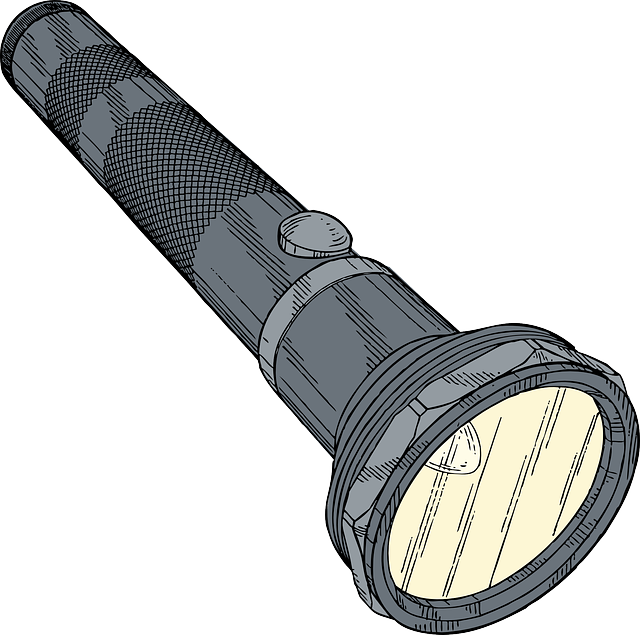
In the event of an unexpected crisis, such as a power outage or natural disaster, flashlights for emergency preparedness become invaluable tools for navigation and safety. Strategic placement of these lights is crucial to ensure immediate access when regular lighting sources fail. A common mistake in home and office preparedness plans is placing flashlights in locations where they are hidden away or inconveniently stored. Instead, consider positioning them in easily accessible spots that are central to critical areas of your living space or workplace. For instance, keep a flashlight next to your bed, in the kitchen, near the front and back doors, and in every room where you might need illumination during an emergency. Additionally, ensure that each flashlight is equipped with fresh batteries regularly to prevent the situation from becoming more perilous due to lack of visibility. By thoughtfully placing flashlights at key points, you can significantly enhance your ability to respond effectively to crises and maintain safety during uncertain times.
Furthermore, it’s beneficial to have a variety of flashlights with different light intensities for various scenarios. A high-intensity beam might be necessary for distant object illumination or signaling, while lower-intensity lights are more suitable for close-up tasks within a confined space. In your emergency kit, consider including a flashlight that is both durable and compact, capable of withstanding harsh conditions and easy to carry with you as you move through the crisis. With careful placement and selection, flashlights for emergency preparedness can serve as reliable companions during unexpected crises, ensuring that you have the necessary light to navigate through the darkness and address whatever challenges lie ahead.
Flashlight Training: Ensuring You and Your Family Know How to Use Them
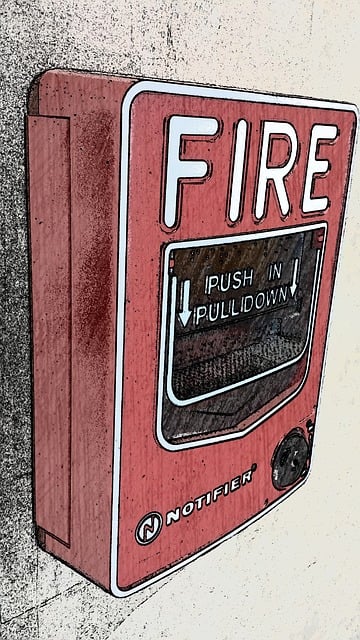
In the event of an unexpected crisis, having a reliable flashlight is not just beneficial but can be a matter of safety for you and your family. To maximize their utility in emergencies, it’s crucial to invest in flashlights designed specifically for emergency preparedness. These flashlights are built to withstand harsh conditions and provide consistent, bright light when traditional power sources might fail. Beyond mere ownership, the efficacy of these tools hinges on proper training. Engaging in regular flashlight training sessions can ensure that all family members are adept at handling these devices under pressure. This includes familiarity with the different modes of operation, understanding how to conserve battery life, and practicing using the flashlights in low-visibility conditions. By incorporating this training into your emergency preparedness plan, you equip everyone with the knowledge and confidence to use their flashlights effectively when it truly matters.
A well-prepared individual is one who not only owns the right equipment but also knows how to apply it correctly. Flashlight training for unexpected crises should encompass various scenarios, teaching users how to maintain a steady light beam, how to navigate safely in darkness, and how to signal for help if necessary. It’s also important to train on the selection of flashlights for emergencies, as not all models are created equal. The best flashlights for emergency preparedness will have features such as durability, high luminosity, and multiple light settings. By integrating these flashlights into regular drills and ensuring that every family member is proficient in their use, you lay the groundwork for a safer response to any crisis situation. This proactive approach not only enhances your ability to cope with emergencies but also instills a sense of readiness and empowerment among all members of the household.
Best Practices for Using Flashlights in Darkened Environments
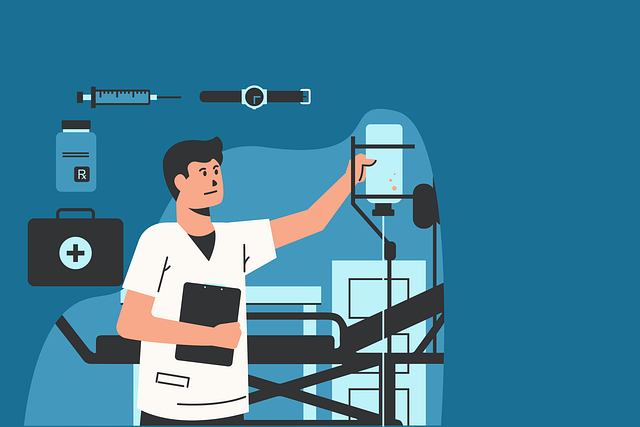
In the event of an unexpected crisis that leaves you in a darkened environment, having a flashlight for emergency preparedness can be a lifesaver. It’s imperative to use these devices safely and effectively to ensure your well-being and maintain visibility during power outages or navigating through darkness. Firstly, always keep the batteries fresh; storing them in a cool, dry place helps maintain their charge when you need it most. Secondly, select a flashlight that suits your needs—pocket-sized models for easy carrying or larger, high-intensity units for illuminating broader areas. When operating the flashlight, use it judiciously to conserve battery life; employing a lower lumen setting is often sufficient for basic navigation and tasks. Direct the beam away from your eyes and others to avoid discomfort or injury. In darkened environments, it’s crucial to be mindful of your surroundings. Flashlights for emergency preparedness should provide enough light to maneuver safely without revealing your position to potential hazards or unseen individuals. Always have a backup flashlight or means of lighting, as equipment can fail at inopportune moments. By adhering to these best practices, you can maximize the utility of your flashlight and enhance your safety during emergency situations.
Post-Crisis Flashlight Care and Maintenance: Keeping Your Tool Ready for Next Time

When an unexpected crisis subsides, it’s imperative to properly care for and maintain your flashlight as it will likely be called upon again. Flashlights for emergency preparedness must be inspected post-use to ensure they remain a dependable tool in your arsenal of safety measures. Firstly, assess the condition of the batteries, as frequent use during a crisis can drain them significantly. Replace any that are weak or dead to guarantee maximum efficiency and longevity for your flashlight. Additionally, clean the lens and body of your flashlight with a soft, dry cloth to remove any dirt or debris accumulated during the event. If grime is stubborn, use a mild solution of water and soap, avoiding harsh chemicals that might damage the materials. Check the seals and O-rings for wear and tear; if compromised, they should be replaced promptly to maintain weatherproofing and prevent moisture ingress. Lastly, test the flashlight in a controlled environment to verify its brightness and functionality. Keeping your flashlights for emergency preparedness in top condition ensures they are ready to illuminate your path during the next unforeseen event. Regular maintenance extends their lifespan and reliability, making them indispensable tools for when you need them most.
In the event of an unexpected crisis, having a reliable flashlight is not just beneficial—it’s a critical component of emergency preparedness. This article has outlined the various types of flashlights most effective for emergencies, the importance of selecting and maintaining durable batteries to ensure your light operates when needed, and the strategic placement of these lights within your home or office for swift access. We’ve also highlighted the necessity of flashlight safety precautions during crises, the value of training yourself and your family in their proper use, and best practices for navigating darkened environments with a flashlight. Moreover, attention to post-crisis care and maintenance ensures that your flashlight remains ready for the next time it’s called into service. In conclusion, incorporating flashlights for emergency preparedness into your crisis response plan is an essential step in ensuring your safety and security when darkness falls and normalcy is disrupted.
